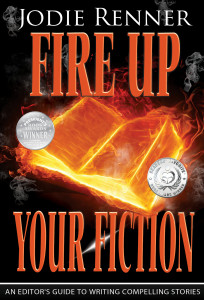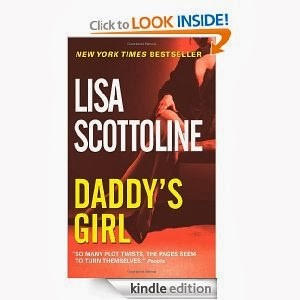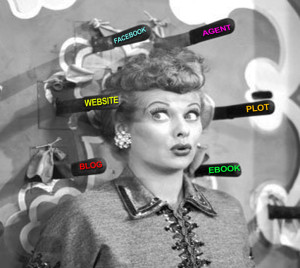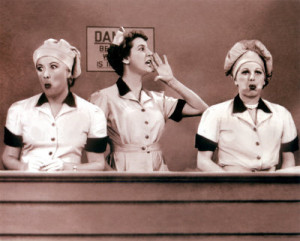 by Jodie Renner, editor & author
by Jodie Renner, editor & author
In my editing and blog posts, I often suggest techniques for bringing characters and the scene to life on the page. A big one I advise over and over is to show the protagonist’s immediate emotional, physical, and/or thought reactions to anything significant that has just happened. This glimpse into the POV character’s real feelings and thoughts increases readers’ emotional engagement, which keeps them eagerly reading. (See Show Your Characters’ Reactions to Bring Them Alive)
Showing your character’s immediate thought-reactions frequently is a great way to let the readers in on what your character is really thinking about what’s going on, how they’re reacting inside, often in contrast to what they’re saying or how they’re acting outwardly. And it helps reveal their personality.
Here are some examples of brief, immediate thought-reactions:
 |
| A scene in Breaking Bad |
No!
Damn.
What?
In your dreams.
What the hell?
Give me a break!
These direct thoughts, the equivalent of direct speech in quotation marks, are silent, inner words the character can’t or doesn’t want to reveal. It’s most effective to italicize these quick, brief thought-reactions, both for emphasis and to show that it’s a direct thought, like the character talking to herself, not the slightly removed indirect thought.
Here are a few examples of indirect thoughts vs. the closer-in, higher-impact direct thoughts:
 Indirect: She’d had enough. She really wanted to leave.
Indirect: She’d had enough. She really wanted to leave.
Direct speech: “I’ve had enough. I’m heading out.”
Direct thought: This sucks! I’m outta here.
(Or whatever. More personal, more unique voice, more attitude, less social veneer.)
Use present tense for direct thoughts.
If your story is in past tense, as most novels are, narration, indirect speech and thoughts will be in past tense, too. But it’s important to put direct, quoted speech and direct, italicized thoughts in present tense, and first-person (or sometimes second person), as they are the exact words the character is thinking.
Direct thoughts = internal dialogue.
Note: Never use quotation marks for thoughts. Quotation marks are for words spoken out loud.
A few more examples:
Indirect thought: He wondered where she was.
Direct speech (dialogue): “Where is she?” he asked.
Direct thought: Where is she? Or: Where the hell is she, anyway?
Note how the italics take the place of quotation marks when it’s a direct thought, the character talking to himself. Also, the italics indicate direct thoughts, so no need to add “he thought” or “she thought.”
Indirect speech: She asked us what was going on.
Indirect thought: She wondered what was going on.
Direct speech: “What’s going on here?” she asked.
Direct thought-reaction: What on earth is going on?
(Or whatever, according to the voice of the POV character.)
To me, using these direct thought-reactions brings the character more to life by showing their innermost, uncensored thoughts and impulses.
In these cases, italics for thoughts take the place of the quotation marks that would be used if the words were spoken out loud. But I advise against putting several long thoughts in a row into italics. In fact, do we even think in complete sentences arranged in logical order to create paragraphs? I don’t think so. Thoughts are often disjointed fragments, as is casual dialogue.
Since italics are also used for emphasis, be sure not to overdo them, or they’ll lose their power.
But do use italics for those immediate thought-reactions, the equivalent of saying out loud, “What!” or “No way!” or “You wish.” Or “I don’t think so.” Or “Yeah, right.” Or “Great.” Or “Perfect.” Or “Oh my god.” Only, for thoughts, take off the quotation marks, of course, so you’ll write: What! or No way, etc.
To me, italics used in this way indicate a fast, sudden break in the social veneer, a revelation or peek into the psyche of the thinker.
So try to insert direct thought-reactions where appropriate to effectively show your character’s immediate internal reactions to events.
But don’t italicize indirect thoughts.
To me, italicizing indirect thoughts (in third-person, past tense) would be the same as putting quotation marks around indirect speech, like: He said, “He wished he could come, too.” (Should be: He said, “I wish I could come, too.”)
So don’t italicize phrases like: Why were they looking for her? She had to find a place to hide!
(“her” and “she” refer to the person thinking.) Keep it in normal font, or change it to a direct thought and italicize:
Why are they looking for me? Where can I hide?
EXAMPLES FROM BESTSELLERS:
Some bestselling authors use a lot of italicized thought-reactions, while others just use them sparingly or not at all. It seems to be a growing trend, though, and I think it’s a great technique for highlighting the character’s inner emotional reactions effectively, directly, and in the fewest possible words.
Lisa Scottoline, for example, uses italicized brief thought-reactions a lot in her novels. They provide a quick peek into the character’s immediate thoughts, without a lot of explaining. Like in Daddy’s Girl:
The heroine, Natalie, has a small cut on her face, and her father, on the phone, asks which hospital
she went to. She says she didn’t need to, “It’s just a little cut.”
“On your face, no cut is too little. You don’t want a scar. You’re not one of the boys.”
Oh please. “Dad, it won’t scar.”
Later, a good-looking guy, Angus, makes a suggestion about lunch while they’re working.
Did he just ask me out?
Later, as they’re working together, Angus tries to protect her, but she isn’t having any of it. The thought-reaction shows the contrast between how she’s really feeling and how she wants him to think she’s going along with his plans.
“I’ll get you out of here in the morning, and you’ll be safe.”
 No way. “Okay, you’ve convinced me.”
No way. “Okay, you’ve convinced me.”
Andrew Gross uses frequent thought-reactions in italics very effectively in his riveting thriller, Don’t Look Twice. Here’s one brief example:
A chill ran down her spine. … Don’t let him see you. Get the hell out of here, the tremor said.
And Dean Koontz uses this technique from time to time in his novel Intensity. For example:
Chyna is hesitating about opening a door, then decides to throw caution to the wind:
 Screw it.
Screw it.
She put her hand on the knob, turned it cautiously, and…
Then later:
He was coming forward, leisurely covering the same territory over which Chyna had just scuttled.
What the hell is he doing?
She wanted to take the photograph but didn’t dare. She put it on the floor where she’d found it.
Note that these intensified thoughts are often at the beginning of a paragraph or set off in their own line, for emphasis. Or sometimes they’re at the end of a paragraph, to leave us with something to think about, as in later in the same book.
Lee Child’s The Affair has lots of examples of Jack Reacher’s critical thoughts in italics. Here’s one of many I could have chosen:
 He asked “Was I on your list of things that might crawl out from under a rock?”
He asked “Was I on your list of things that might crawl out from under a rock?”
You were the list, I thought.
He said, “Was I?”
“No,” I lied.
(Not to nit-pick with a huge bestselling author, but in my opinion, neither the “I thought” or the “I lied” are necessary above.)
Lee Child also uses this technique a lot in The Hard Way, especially to show Jack Reacher’s mind busily working away while he’s talking to or watching someone, or to emphasize the importance of a bit of info he’s just learned.
 David Baldacci uses this technique frequently in Hell’s Corner to show the direct thoughts of his
David Baldacci uses this technique frequently in Hell’s Corner to show the direct thoughts of his
protagonist, Oliver Stone. Here’s one example:
Burn in hell, Carter, thought Stone as the door closed behind him.
And I’ll see you when I get there.
Brenda Novak, in her romantic suspense, In Close, uses italicized thoughts to show the contrast between what the character, Claire, is saying and what she’s really thinking:
“Maybe I could get back to you in the morning after I’ve…I’ve had some sleep.” And a chance to prepare myself for what you might say….
 Even TKZ’s James Scott Bell uses this technique in his delightful novellette, Force of Habit. The spunky, rebellious Sister J, a former actress and trained martial arts expert, is being confronted by someone obnoxious who has recognized her. Her internal dialogue shows her (unsuccessful) attempt at calming herself.
Even TKZ’s James Scott Bell uses this technique in his delightful novellette, Force of Habit. The spunky, rebellious Sister J, a former actress and trained martial arts expert, is being confronted by someone obnoxious who has recognized her. Her internal dialogue shows her (unsuccessful) attempt at calming herself.
“Can you still kick butt?”
She could all right, and she felt like kicking something right now. His shin, if not the wall. Think of St. Francis, she told herself. Think of birds and flowers…
 Jodie Renner is a freelance fiction editor and the award-winning author of three craft-of-writing guides in her series An Editor’s Guide to Writing Compelling Fiction: Captivate Your Readers, Fire up Your Fiction, and Writing a Killer Thriller. She has also published two clickable time-saving e-resources to date: Quick Clicks: Spelling List and Quick Clicks: Word Usage. You can find Jodie at www.JodieRenner.com, www.JodieRennerEditing.com, her blog, http://jodierennerediting.blogspot.com/, and on Facebook, Twitter, and Google+.
Jodie Renner is a freelance fiction editor and the award-winning author of three craft-of-writing guides in her series An Editor’s Guide to Writing Compelling Fiction: Captivate Your Readers, Fire up Your Fiction, and Writing a Killer Thriller. She has also published two clickable time-saving e-resources to date: Quick Clicks: Spelling List and Quick Clicks: Word Usage. You can find Jodie at www.JodieRenner.com, www.JodieRennerEditing.com, her blog, http://jodierennerediting.blogspot.com/, and on Facebook, Twitter, and Google+.





